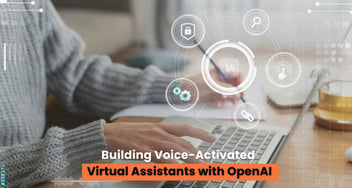Fine-Tuning GPT-3 for Industry-Specific Virtual Assistants
Explore the power of fine-tuning OpenAI's GPT-3 for industry-specific virtual assistants. Learn how domain-specific knowledge and tailored training enhance accuracy, customization, and cost-efficiency, providing valuable user assistance.

GPT-3, developed by OpenAI, is renowned for its human-like text generation and natural language understanding abilities. Fine-tuning this robust model for industry-specific applications is essential for ChatGPT developers.
This article delves into the precise process of enhancing GPT-3's performance as a virtual assistant, employing code snippets and best practices tailored to specific industries.
Why Fine-Tune GPT-3?
Fine-tuning GPT-3 is crucial for several reasons:
- Domain-specific Knowledge: Fine-tuning allows the model to acquire domain-specific knowledge, making it more useful in specialized tasks.
- Improved Performance: By training on industry-specific data, the model can generate more accurate and contextually relevant responses.
- Customization: You can tailor the virtual assistant to suit your business needs and requirements.
- Cost-Efficiency: Fine-tuning can lead to more efficient use of resources since the model becomes more proficient in its specialized tasks.
Getting Started with Fine-Tuning
Before you begin, make sure you have access to GPT-3 and the necessary Python libraries. OpenAI's GPT-3 API is essential for fine-tuning GPT-3 models.
![]()
Fine-Tuning Data Collection
To fine-tune GPT-3, you need a dataset specific to your industry. This dataset should include examples of inputs and expected outputs for your virtual assistant. You can collect data manually or use web scraping techniques, depending on your industry's requirements.

Fine-Tuning Process
Once you have your dataset ready, you can start the fine-tuning process. OpenAI provides detailed guidelines on how to fine-tune GPT-3 models. Below is an example code snippet to give you an idea:
![]()

Evaluation and Testing
After fine-tuning, it's essential to evaluate the model's performance. You can create a test set with input-output pairs and assess how well the virtual assistant responds to various queries.

Conclusion
Fine-tuning GPT-3 for industry-specific virtual assistants can significantly enhance their performance and relevance.
Experience AI-Driven Innovation at Your Fingertips
Our skilled team will work with you to create customized generative AI solutions that enable your business to thrive!
By following the steps outlined in this article and adapting the code snippets to your specific needs, you can create a virtual assistant tailored to your industry, providing valuable insights and assistance to users. Keep in mind that fine-tuning requires careful handling of data and resources, but the results can be well worth the effort.



.png?width=344&height=101&name=Mask%20group%20(5).png)
















